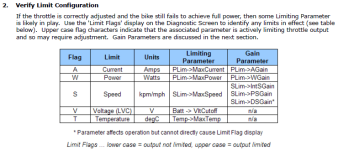rowbiker
100 W
Tek, Justin, et al.
Since doing "Windows desktop support" is near the top of everybody's list of 'most fun' things to do, here's an opportunity. I yesterday downloaded the latest CA setup utility from the Grin page (per Tek's post above) and installed it per usual methods. After installation -- which went fine -- the program reported being version 1.43, and defaulted to the b20 hex firmware file. I currently have four CAv3 units in play for various projects, so I was going to update all of them from their current b15 firmware versions.
I first installed 1.43 on a Win7Pro box (OS is 32 bit, but Dell Optiplex 780 is 64 bit hardware). I accepted the default b20 setup file, changed several values, and 'saved as' a new custom file. When I got down to the PASD section, made some changes, and did a Save (via Ctl-S on keyboard), and the program crashed (popup window, "CASetupUtility.exe has stopped working". I can provide additional details about crash details, but it pointed to a problem with "ntdll.dll". The edited values actually got saved, including the last change prior to the crash. I could restart the program, reload my edited file, and continue ... unitl the next Save, which led to another crash. Not the most useful way to proceed.
I downloaded the same 1.43 to an old Toshiba laptop running WinXPPro, which is my main machine for programming the CA's, and got exactly the same behavior as above, including the crash details pointing to the ntdll file. Actually, the crashed happened sooner, so I know the failure isn't specific to the PASD section data changes.
I tried running the program both as the user who installed the program as well as in 'administrator' mode, so I don't think it's a "permissions" thing -- especially since all changes were duly saved to the new files on the disk.
All previous versions of the setup utility have worked just fine for me, including the last previous version before this new 1.4* series. I did not install the 1.41, or the 1.42 if there was one. On the old laptop I had to tweak the communication parameters on the programming link to accommodate for a slower CPU, but all has been fine since.
I can try to install the Linux 1.43 version, but I'd prefer to get it running on my old laptop, which already has a place in my ebike toolbox. I can also install on a Win10Pro laptop to see what happens, if you want me to.
Thanks!
Since doing "Windows desktop support" is near the top of everybody's list of 'most fun' things to do, here's an opportunity. I yesterday downloaded the latest CA setup utility from the Grin page (per Tek's post above) and installed it per usual methods. After installation -- which went fine -- the program reported being version 1.43, and defaulted to the b20 hex firmware file. I currently have four CAv3 units in play for various projects, so I was going to update all of them from their current b15 firmware versions.
I first installed 1.43 on a Win7Pro box (OS is 32 bit, but Dell Optiplex 780 is 64 bit hardware). I accepted the default b20 setup file, changed several values, and 'saved as' a new custom file. When I got down to the PASD section, made some changes, and did a Save (via Ctl-S on keyboard), and the program crashed (popup window, "CASetupUtility.exe has stopped working". I can provide additional details about crash details, but it pointed to a problem with "ntdll.dll". The edited values actually got saved, including the last change prior to the crash. I could restart the program, reload my edited file, and continue ... unitl the next Save, which led to another crash. Not the most useful way to proceed.
I downloaded the same 1.43 to an old Toshiba laptop running WinXPPro, which is my main machine for programming the CA's, and got exactly the same behavior as above, including the crash details pointing to the ntdll file. Actually, the crashed happened sooner, so I know the failure isn't specific to the PASD section data changes.
I tried running the program both as the user who installed the program as well as in 'administrator' mode, so I don't think it's a "permissions" thing -- especially since all changes were duly saved to the new files on the disk.
All previous versions of the setup utility have worked just fine for me, including the last previous version before this new 1.4* series. I did not install the 1.41, or the 1.42 if there was one. On the old laptop I had to tweak the communication parameters on the programming link to accommodate for a slower CPU, but all has been fine since.
I can try to install the Linux 1.43 version, but I'd prefer to get it running on my old laptop, which already has a place in my ebike toolbox. I can also install on a Win10Pro laptop to see what happens, if you want me to.
Thanks!




